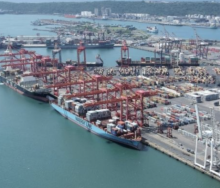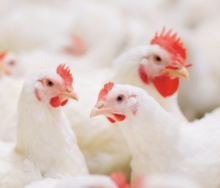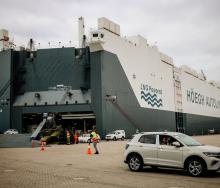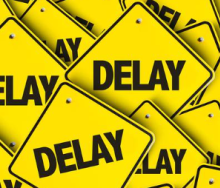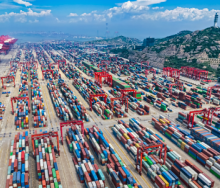The Port of Rotterdam is testing the use of drones for a range of inspection and monitoring tasks over the next few months.
The port authority announced that it would be testing the drones near Europoort and the western Maasvlakte extension, which includes several container and breakbulk terminals.
According to Maritime Executive, The Port of Rotterdam Authority says it wants to find out if the drones are suitable for supporting inspectors and shipping masters in their work. The trials will focus on sea-going and inland ship inspections covering bunkering, ship-to-ship transfer, zoning for hazardous substances, water pollution, shore-to-ship transfer and air pollution (smoke or soot), as well as repairs on vessels. Dutch manufacturer Avy’s, Aera 3, the newest model drone, will be used to conduct the wide-ranging tests. The Aera 3 has a wing span of about 2.4 metres (eight feet), a cruise speed of around 88.5 kilometres per hour (55 miles), and an approximately 60-mile (96.5km) range at low energy consumption.
Just three drones will be sufficient to monitor activity across the entire port area during the test period, according to the port authority. For example, if a drone detects an open tank filler cap, this may be an indication of illegal degassing by a vessel. This would allow port authorities to investigate further to find out whether regulations are being followed.
Additional uses for the drones would be to investigate an incident in the port and to deliver small packages. A drone can be quickly dispatched to fly safely over an area where an incident has occurred to see what is happening and monitor the response. The drones can deliver small cargo of up to three kilograms, such as refrigerated medical supplies, vessel parts and cargo samples within the port.
They will take off automatically from the Rotterdam-Rijnmond Pilotage Service at Pistoolhaven and will share the same airspace as helicopters. Piloting and search and rescue operations will take priority over drone operations.
This latest test project comes after the European Maritime Safety Agency has increasingly made drones available for tasks that include the monitoring and testing of emissions from ships in restricted areas and to coordinate safety and rescue operations with coast guards. The Port of Antwerp also recently tested drones to monitor activity and security across the port complex.


